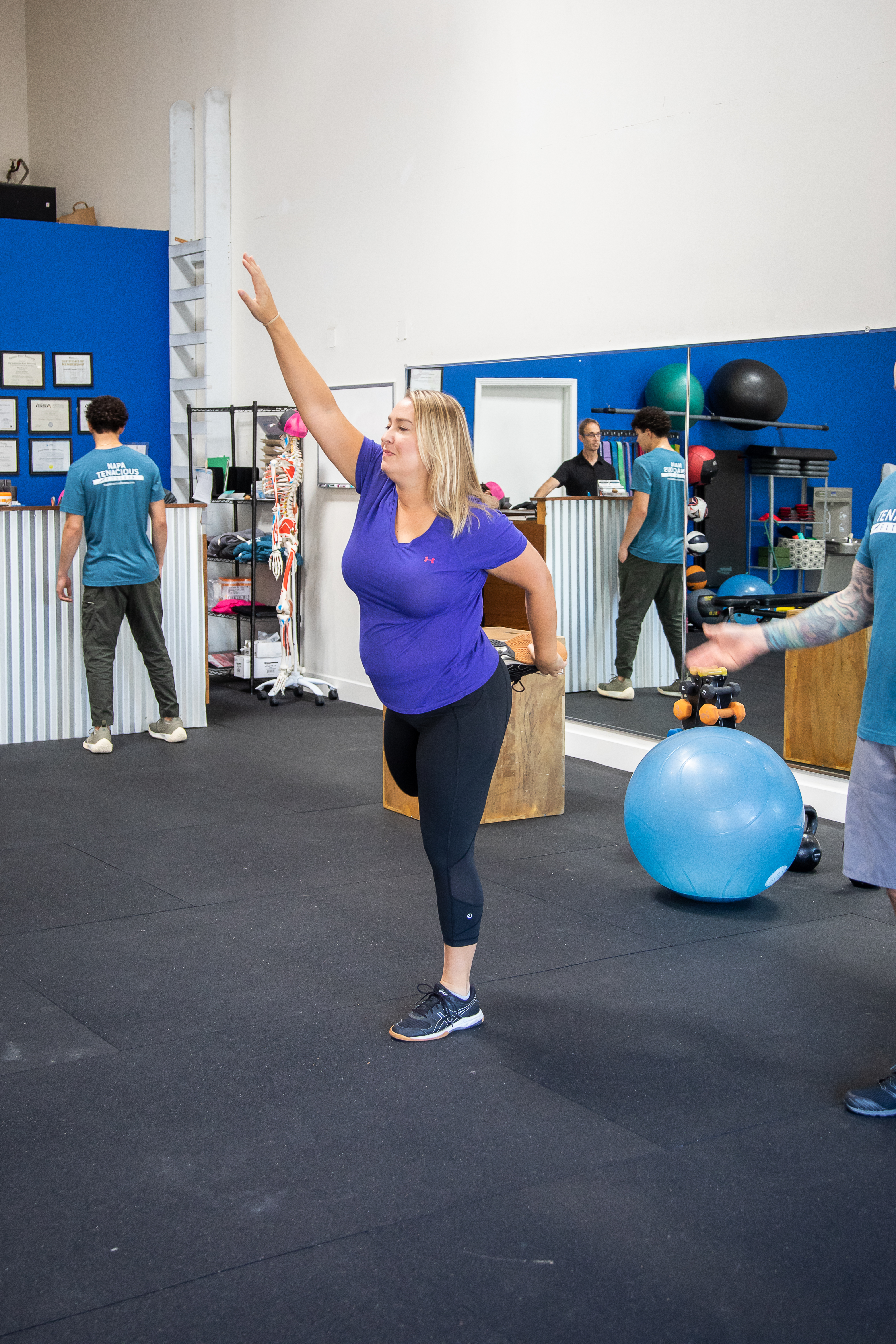There are many everyday life scenarios in which we find ourselves being pushed off our center of gravity. Whether it’s a slight stutter step to the outside or tripping over an object on the ground, regaining our balance and center of gravity is frequent interaction with our environment. Activities as simple as getting out of bed, stepping up and down stairs, or putting on shoes present situations that can cause us to stumble. In the worst-case scenario, a seemingly basic daily activity hindering balance can cause a fall.
It takes one simple presentation of imbalance, resulting in our bodies traveling in a compromising direction. These random instances that disrupt our balance can bring something as minor as a brief stumble. In extreme cases, a fall can result in a significant injury and a drastic change to our everyday functionality.
Loss of balance leads to immediate, impulsive reactions to aid our bodies from sustaining an injury. An example is reaching our hands out to brace ourselves when the body is unexpectedly propelled forward following a stumble or trip. This response is meant to grab onto objects to break our fall or have our hands take the brunt of the force the body endures if it plummets to the ground, acting as a shock absorber. Another immediate reaction the body performs is taking a few steps forward until our center of gravity is regained after we stumble on objects, such as a rock or crack in the ground. The reaction of stumbling forward influences the body to regain upright posture by telling the lower extremities to move rapidly under the torso. If the torso falls faster than the lower extremities, the body can be sent diving to the ground quicker than a redwood being felled in Mendocino county.
The threat of losing balance and falling is no joke. The risk of falling can show itself after recovering from an injury to our lower extremities, adopting a sedentary lifestyle, or advancing age. Examples of recovering from injury could include healing from a twisted ankle to the more extreme cases of recovering from hip replacement surgery. For those of us having a career requiring multiple hours on the computer, commuting in a car or airplane, or taking phone calls all day at a desk, it should be no surprise that activity levels will decrease. In this case, with lower activity levels, fitness and human performance can decrease by experiencing adaptations of increased fat mass, reduced strength, and deconditioning of athletic potential.
Additionally, the advancement of age presents the accumulation of multiple factors, causing moments where the body can be disoriented and lose balance. Therefore, it’s important to identify these risk factors leading to potential loss of balance and fall risks. Fortunately, we don’t need to let the loss of balance become a life-altering issue. Educating ourselves on exercises to fortify our balance and coordination is a solution that takes an investment of time to exercise. However, the results help us mitigate the factors leading to loss of balance and the risk of falling.
We perform a basic progression to improve balance with our personal training clients. The single-leg balance exercise is a simple and potently effective technique that rapidly enhances balance. Below are a few progressions on introducing this exercise and continuing them after building competency and mastering each progress point.
- Hand supported on stable object isometric leg lift (beginning level exercise): Find a sturdy object to place your hand on while standing upright. Such as the corner of a wall, a rail, or a post. Lift one leg to where the knee is around hip level. Hold this position for fifteen to thirty seconds. Repeat this movement for three sets on each leg. Once you feel this exercise can be performed without using a stabilizing object to hold on to, move to the next progression.
- Standing leg staggered in front foot lift-offs (progression 1): Position yourself in an upright stance and bring one foot out in front of the body to where the leading foot’s heel is about even with the middle of the stationary foot. Ensure to position yourself next to a supporting object in case of losing balance. This way, you can regain a safe standing position. Next, lift the leading foot slightly off the ground and place it back down in a safe and stable position. Perform three sets of five to ten repetitions on each leg. Once mastery and competency of lifting the foot and setting it down have been mastered, progress to the next exercise.
- Hands-free isometric leg lift (progression 2): While standing upright, find a sturdy object that your hand can grab onto for safety. Such as the corner of a wall, a rail, or post. Without using the stabilizing object, lift one leg to where the knee is around hip level. Ensure to spot yourself next to the supporting object in case there is a loss of balance to regain a safe standing position. Hold this position for five to fifteen seconds. Repeat this movement for three sets on each leg.
The threat of losing balance can be reduced if we train our bodies to endure the risk factors thrown our way. It’s equally important to choose exercises that increase our balance and practice them consistently. After we notice we are progressing in a specific exercise, we can advance to the next exercise to improve our balance more. These progressions take compliance, consistency, and focus.
Sean McCawley, the founder and owner of Napa Tenacious Fitness in Napa, CA, welcomes questions and comments. Reach him at 707-287-2727, napatenacious@gmail.com, or visit the website napatenaciousfitness.com.

